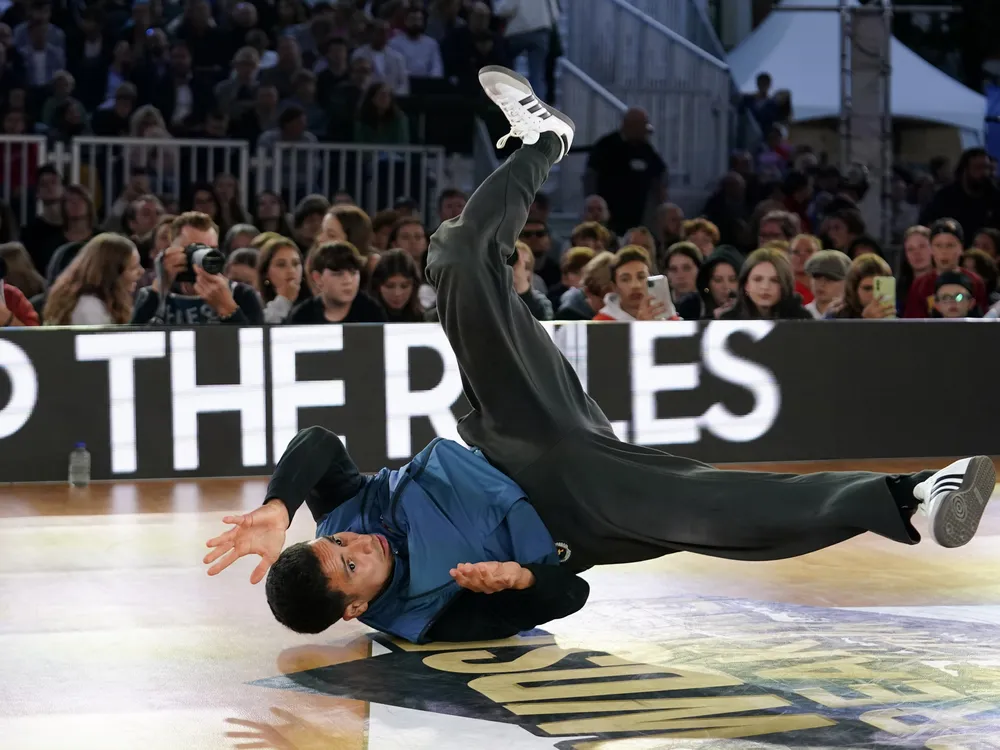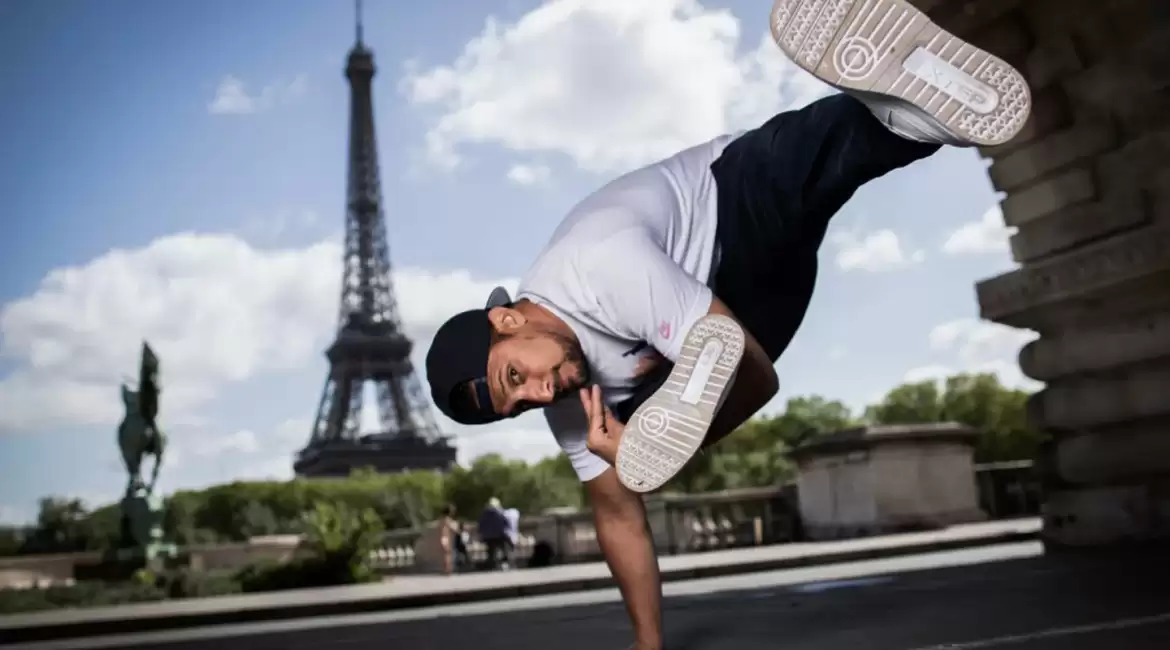As someone who has been deeply immersed in the world of breaking for the past five years, I’ve had the privilege of witnessing firsthand the incredible journey this dance form has taken. From its humble beginnings on the streets of the Bronx to its upcoming debut on the Olympic stage in Paris, breaking has come a long way. Today, I’m excited to share with you the fascinating story of how breaking evolved from a street dance to an Olympic sport.

The Birth of Breaking
To truly understand the significance of breaking’s Olympic debut, we need to start at the beginning. Breaking was born in the Bronx, New York, in the summer of 1973. It emerged as part of the larger hip-hop culture, alongside graffiti art, DJing, and rapping.
The catalyst for breaking’s creation was a DJ named Kool Herc. At a party, Herc noticed that dancers were most energetic during the instrumental breaks in songs. Inspired by this observation, he developed a technique using two turntables to extend these breaks, giving dancers more time to show off their moves.
This innovation sparked a revolution in dance. Dancers began to develop new moves, incorporating elements from gymnastics, martial arts, and other dance styles. They engaged in dance-offs, battling each other to prove who had the best moves. This competitive aspect, which remains central to breaking today, was present from the very beginning.
The dancers called their new style “b-boying,” and themselves “b-boys” and “b-girls.” The term “breakdancing” came later, coined by the media, but it’s important to note that within the breaking community, this term is considered outdated and even somewhat offensive. As Kevin Gopie (DJ Renegade) puts it, “If you call it breakdancing, you’re not a breaker.”
Breaking’s Rise to Popularity
Throughout the 1970s and early 1980s, breaking remained largely underground, flourishing in the streets and clubs of New York City. However, it wasn’t long before the mainstream media caught wind of this exciting new dance form.
Breaking reached its first peak of popularity in the mid-1980s. It featured prominently in movies like “Beat Street” (1984) and “Flashdance” (1983), bringing the dance form to a global audience. Suddenly, breaking was everywhere – on TV, in music videos, and even in international dance competitions.
However, this sudden surge in popularity was followed by a decline. As the novelty wore off, mainstream interest in breaking waned. But while it may have disappeared from the public eye, breaking never truly went away. The dedicated community of b-boys and b-girls continued to practice, innovate, and compete, keeping the art form alive and evolving.
The Competitive Evolution of Breaking
One of the key factors in breaking’s journey to the Olympics was the development of a robust competitive scene. Throughout the 1990s and 2000s, major international breaking competitions emerged, providing platforms for breakers to showcase their skills on a global stage.
Events like Battle of the Year (first held in 1990) and Red Bull BC One (launched in 2004) became the pinnacle of competitive breaking. These competitions not only raised the profile of breaking but also helped to standardize judging criteria and competition formats.
The competitive aspect of breaking is crucial to understanding its qualification as an Olympic sport. While breaking is undoubtedly an art form, it’s also a highly athletic pursuit that requires immense physical skill, strategy, and mental fortitude. As David “Kid David” Shreibman explains, “Breaking has to be one of the hardest things in the world. You need the athleticism of a professional athlete, but you also need to be an artist, and you need to dance.”
Breaking’s Olympic Journey
Breaking’s path to the Olympics began in earnest in 2018 when it was included in the Youth Olympic Games in Buenos Aires, Argentina. The event was a resounding success, attracting over a million viewers and demonstrating breaking’s potential as a crowd-pleasing Olympic sport.
Following this success, the International Olympic Committee (IOC) made the historic decision to include breaking in the 2024 Paris Summer Olympics. This decision was part of a broader effort by the IOC to make the Olympics more appealing to younger audiences.
As Jean-Laurent Bourquin, a former senior manager with the IOC, explains, “Breaking is allowing the [International Olympic Committee] to reconnect with the youth, the generation between 15 and 25 years old.”
The Olympic Format
At the Paris 2024 Olympics, breaking will make its debut as a medal event. The competition will feature 32 athletes – 16 B-boys and 16 B-girls – competing for gold, silver, and bronze medals.
The Olympic breaking competition will take place at the iconic Place de la Concorde in Paris. Athletes will perform to music spun by a DJ, showcasing a variety of moves including intricate footwork, power moves (like windmills and head spins), and “freezes” where dancers balance on their hands, head, or other body parts.
Judges will score the performances based on six criteria: creativity, personality, technique, variety, performativity, and musicality. This judging system aims to capture both the athletic and artistic aspects of breaking.
The Athletes
The journey to become an Olympic breaker is no easy feat. Athletes must qualify through a series of international competitions, with only the top performers earning a spot at the Games.
So far, the United States has chosen two of its four Olympic breakers: Sunny Choi, a 35-year-old from New York, and Victor Montalvo, a 29-year-old based in Florida. These athletes, like their counterparts from around the world, have dedicated their lives to perfecting their craft.
The intense physical demands of breaking mean that Olympic breakers must train like any other elite athlete. They spend hours in the gym building strength and flexibility, practice their moves relentlessly, and work with coaches to refine their technique and develop their unique style.

The Impact of Olympic Inclusion
Breaking’s inclusion in the Olympics is a watershed moment for the dance form. It brings unprecedented visibility and legitimacy to breaking, potentially attracting new participants and fans to the art form.
As Vicki Chang, a breaker hoping to qualify for the U.S. team, puts it, “The Olympics are such a big platform for us to share what we do and bring people into the community that otherwise might not have known breaking even existed.”
However, the Olympic inclusion also brings challenges and controversies. Some in the breaking community worry about the potential for commercialization and the loss of breaking’s raw, street culture roots. Others question whether breaking should be considered a sport at all, arguing that it’s primarily an art form.
These debates reflect the complex nature of breaking, which straddles the line between art and sport. As the Washington Post’s Rick Maese points out, breaking “isn’t that different from other judged events at the Olympics, such as figure skating and gymnastics,” which also combine athletic skill with artistic expression.
The Future of Breaking
As we look ahead to breaking’s Olympic debut in Paris, it’s clear that we’re entering a new era for this dynamic dance form. The Olympic spotlight will undoubtedly bring changes, but it also presents incredible opportunities.
For one, it’s a chance to introduce breaking to a global audience who might never have encountered it otherwise. It’s an opportunity to showcase the skill, creativity, and athleticism that goes into this dance form, and to challenge preconceptions about what constitutes a sport.
Moreover, Olympic recognition could lead to increased support and resources for breaking programs worldwide. This could mean more opportunities for young people to get involved in breaking, more support for professional breakers, and a greater appreciation for the art form as a whole.
However, as breaking steps onto the Olympic stage, it will be crucial to maintain a connection to its roots. The challenge will be to embrace the opportunities that come with Olympic recognition while preserving the culture, creativity, and community spirit that have always been at the heart of breaking.
Conclusion
Breaking’s journey from the streets of the Bronx to the Olympic stage in Paris is a testament to the power of creativity, perseverance, and community. It’s a story of how a marginalized art form, born out of the need for self-expression, grew to capture the imagination of the world.
As we prepare to witness breaking’s Olympic debut this summer, it’s important to remember and honor this rich history. Whether you’re a longtime fan of breaking or someone who’s just learning about it through its Olympic inclusion, I encourage you to approach it with an open mind and an appreciation for its complexity.
Breaking is more than just a sport or a dance – it’s a culture, a community, and a way of life. Its inclusion in the Olympics is not the end of its journey, but rather the beginning of a new chapter. As the world tunes in to watch B-boys and B-girls showcase their skills on the Olympic stage, we’re not just witnessing a competition – we’re seeing the culmination of decades of passion, innovation, and dedication.
So this summer, as you watch the breaking competitions at the Paris Olympics, remember: you’re not just watching athletes compete. You’re witnessing living, breathing history – the continuation of a story that began on the streets of the Bronx over 50 years ago. And who knows? Maybe you’ll be inspired to try out some moves yourself. Just remember – it’s breaking, not breakdancing!


Leave a reply